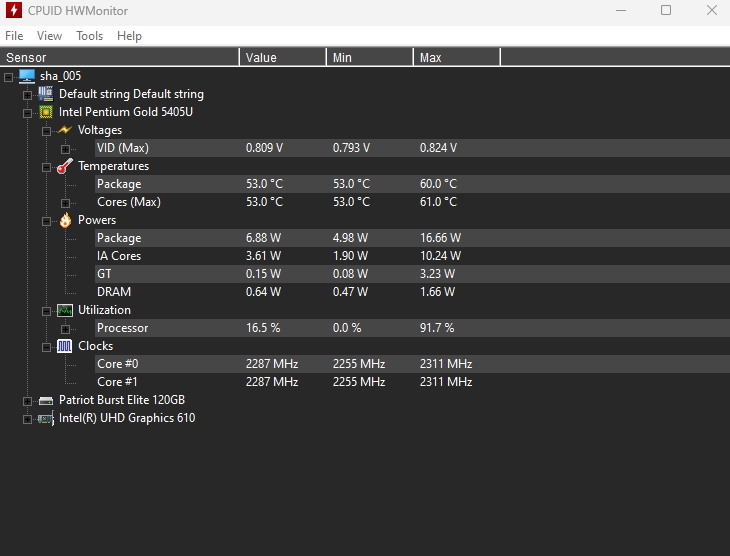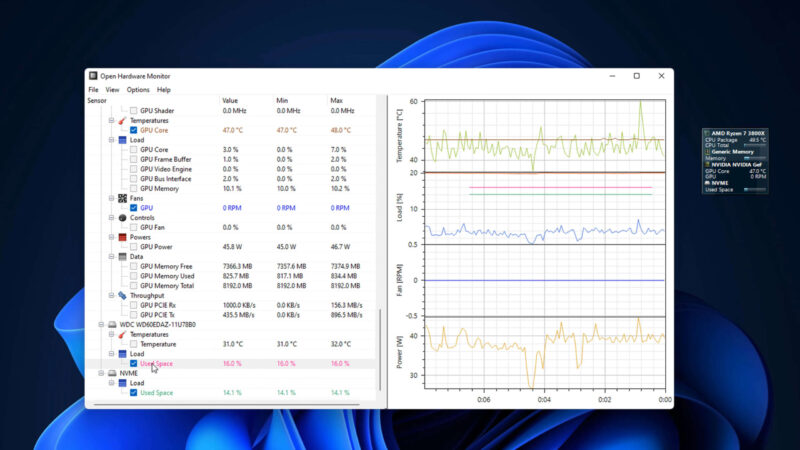CPU temperature monitoring is a preventive measure against overheating, which can be caused by various factors including dust accumulation, poor ventilation, or inadequate cooling systems.
In Windows 11, while the operating system itself does not have a built-in utility specifically designed for temperature monitoring, there are several reliable methods to accomplish this task.
Monitoring CPU temperature is vital for diagnosing and preventing overheating issues. It helps in identifying when the CPU is under heavy load and may require intervention, such as cleaning the cooling system, upgrading the cooling solution, or optimizing the workload to prevent damage to the CPU and ensure optimal performance.
Method 1: BIOS or UEFI
The BIOS (Basic Input/Output System) or UEFI (Unified Extensible Firmware Interface) provides the most fundamental way to check CPU temperature. This method involves restarting the computer and entering the BIOS or UEFI settings. The process to access these settings varies by motherboard manufacturer but generally involves pressing a key such as F2, F10, Del, or Esc during the boot process.
Within the BIOS or UEFI, you can navigate to the hardware monitoring or system health section, where the CPU temperature is displayed. This method gives a baseline temperature reading without the influence of the operating system or background applications. However, it’s not practical for continuous monitoring since it requires rebooting and entering the BIOS/UEFI.
Method 2: Third-party Software

Several third-party applications provide comprehensive monitoring solutions, displaying not only the CPU temperature but also other vital statistics like voltage, fan speeds, and more. Applications such as HWMonitor, Core Temp, and Speccy are popular choices.
- HWMonitor is a hardware monitoring program that reads PC systems’ primary health sensors, including CPU temperatures. It offers detailed information and supports most hardware monitoring chips found on motherboards.
- Core Temp provides a straightforward display of CPU temperature and other vital information. It’s known for its ability to display the temperature of each core of every processor in the system. This can be particularly useful for diagnosing overheating issues in multi-core CPUs.
- Speccy offers a comprehensive system information tool that includes temperature readings alongside detailed hardware specifications. It’s designed for users who need not just temperature monitoring but also a deep dive into their system’s components.
These applications are typically easy to install and run. After downloading and installing the preferred tool, launch the application to view the CPU temperature. Some of these tools offer advanced features such as logging, custom alerts, and even mobile app integration for remote monitoring.
Method 3: Windows Task Manager and Performance Monitor
With the introduction of Windows 11, Microsoft has enhanced the Task Manager and included more detailed performance tracking capabilities. While it doesn’t directly show CPU temperature, it can be used to monitor CPU usage and performance levels, which indirectly helps in managing temperature by identifying processes that are consuming a high amount of CPU resources.
For direct temperature monitoring, the Performance Monitor tool in Windows can be configured to track various system health indicators, including CPU temperature, if the motherboard and CPU support this feature. Setting this up involves navigating to the Performance Monitor, adding a new data collector set, and selecting the counters for CPU temperature. This method requires a bit of technical knowledge and may not be supported on all systems.
Understanding CPU Temperature Readings

When monitoring CPU temperature, it’s essential to know what constitutes a safe or normal temperature range. Typically, a CPU’s temperature can vary depending on the make and model, though most CPUs should operate safely within the range of 30°C to 70°C under normal load conditions. Temperatures above 80°C, especially under heavy load, may indicate a potential overheating issue that needs to be addressed.
Managing and Reducing CPU Temperature
Managing CPU temperature involves both hardware and software solutions. Ensuring that the computer’s cooling system is clean and functioning correctly is crucial. This may involve cleaning dust from fans and heatsinks or replacing thermal paste between the CPU and its cooler. From a software perspective, managing the CPU’s workload by closing unnecessary applications and optimizing settings for performance can help reduce temperatures.
FAQs
Can running too many applications at once cause CPU overheating?
Yes, running multiple applications or processes simultaneously can increase the CPU’s workload, leading to higher temperatures. This is because each application requires CPU resources to run, and more applications mean more demand on the CPU, causing it to generate more heat.
How often should I check my CPU temperature?
The frequency of checking your CPU temperature can vary based on your usage and the ambient temperature of your environment. For general use, checking once a week or when your system seems to be running slower than usual is sufficient.
What should I do if my CPU temperature is consistently high?
If your CPU temperature is consistently higher than normal, first ensure that your cooling system is working correctly. Check for any dust buildup in the fans and heatsinks, and consider replacing the thermal paste. If the problem persists, consider upgrading your cooling solution or consulting a professional.
Does ambient room temperature affect CPU temperature?
Yes, the ambient room temperature can significantly affect your CPU temperature. A warmer room can lead to higher CPU temperatures, as the difference between the ambient temperature and the temperature required for effective heat dissipation is reduced. Keeping the room cool can help in maintaining lower CPU temperatures.
Are there any built-in Windows 11 features that help manage CPU temperature?
While Windows 11 does not have a built-in feature specifically for monitoring CPU temperature, it does offer settings that can indirectly help manage CPU load and, consequently, its temperature. For instance, adjusting power settings to a more energy-efficient plan can reduce CPU performance to lower temperatures. Additionally, using the Task Manager to end high-impact processes can also help reduce CPU temperature.
Is it safe to use third-party software for monitoring CPU temperature?
Yes, it is generally safe to use reputable third-party software for monitoring CPU temperature. Many of these applications are widely used and trusted within the tech community. However, it’s crucial to download software from official websites or reliable sources to avoid malware. Always read reviews and check ratings before installing any third-party application.
Final Words
Monitoring the CPU temperature in Windows 11 is essential for maintaining system health and performance. While the OS does not offer a native tool specifically for this task, users can rely on BIOS/UEFI settings, third-party software, or indirect monitoring through Task Manager and Performance Monitor to keep an eye on their CPU’s temperature.
Understanding what temperatures are normal and how to manage heat can help in prolonging the life of a CPU and ensuring that the computer runs smoothly.
